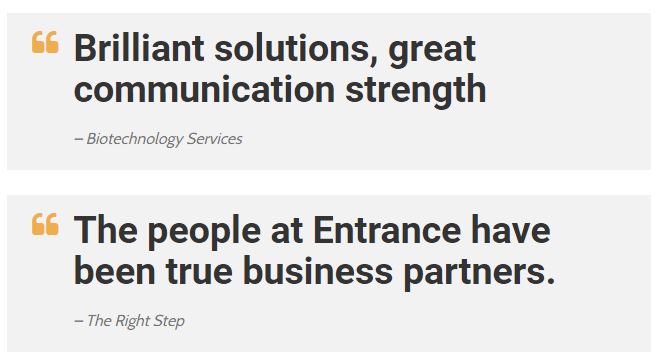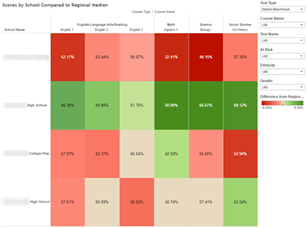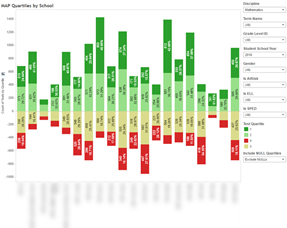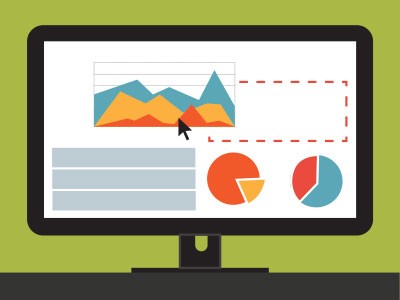TABLEAU CONSULTING SERVICES
READY TO VISUALIZE YOUR BUSINESS DATA USING TABLEAU?
Our Tableau experts can help you turn your raw data into expressive and insightful visualizations
Why choose Entrance as your Tableau Partner?
- We are a certified Tableau partner
- We have experience building visualizations and also training and coaching others
- We are a team of industry veterans with repeated client results
- Our clients say we’re “Smart + Fun,” meaning we ramp fast on their business and are a pleasure to work with

BUSINESS INTELLIGENCE DASHBOARD KIT
These worksheets will help you focus and organize your goals for the flow of information, paving the way for dashboards that surface the information
Tableau is a data visualization tool that offers many of the features of the more engineering-focused TIBCO Spotfire while being a bit easier to pick up and learn. Like similar tools, it features a range of data connectors for importing and refreshing data from familiar data stores (e.g., SQL, SharePoint, Excel) as well as many more specialized sources. Once Tableau data integration is achieved, the data is stored in memory by Tableau Server. The way that the data is stored allows for alarming fast representation and manipulation of large amounts of data.


This speedy rendering of data on the screen means consumers of a Tableau dashboard can filter, click-through, and inspect data in a variety of ways. They can ask questions and then find the answers on their own. This differs from the last generation of static reporting tools, which offered users little control over how the data was presented, and if they had a question not answered by the report as packaged, they had to rely on IT to modify the report or create a new one, leading to a significant delay between the question being asked and it being answered. Thus, if reporting is a monologue, self-service BI enabled by Tableau is a conversation.
Slightly more advanced users of Tableau can use data sets published by the IT department to quickly create their own dashboards. Using a set of standard data sources ensures that the data model is consistent throughout the organization, minimizing data consistency issues and rework. This is the second area where Tableau shines. Once the data set is published, it is quite easy to drag rows, columns, and filters onto the workspace to create a report or dashboard. Tableau even suggests possible report types that you may want to see (e.g., stacked bar chart, pie chart). This means that users can not only alter published reports, they can create them without IT intervention to immediately answer the questions that they have.
SPEAK TO AN EXPERT TODAY
Set up a complimentary 30-minute session with one of our Tableau Experts
To get started with Tableau, the data to be visualized needs to be well organized and well understood. Designating an owner for different business entities is a good idea. This person can answer the questions of the implementation team and verify data quality. Tableau is often used to replace existing reports. In these cases, the team must make sure that the information shown in Tableau aligns with the data users are receiving from these reports. If not, credibility in the accuracy of the Tableau reports and dashboards will suffer an immediate blow.
Tableau Server needs to be installed, or you can use a cloud-hosted version through Tableau or a private hosted company. User licenses needs to be assigned and permissions designated on the server. As the first dashboards are built, the underlying data model should be constructed, published for others to consume, and set up to periodically refresh. Our Tableau consulting team can even help set up the server to be securely exposed to the internet so that it is accessible anywhere, even if it is hosted on-premises.

Frequently Asked Questions
Why Use Tableau Software?
Tableau is an extremely robust suite of data analytics and visualization software that has considerably less of a learning curve than other comparable tools such as TIBCO Spotfire. Its vast array of connectors allows it to communicate effortlessly with nearly any data source, and it outputs interactive dashboards providing an unmatched level of insight.
How Can Entrance Tableau Consultants Help With Data Integration?
Entrance provides premier Tableau consulting services designed to help get you started with the powerful data analytics platform. We can help you choose a hosting solution, set up the servers, and help you integrate your Tableau data with a host of other tools.
Do You Offer Tableau Software Training?
In addition to providing Tableau integration services, Entrance offers your staff complete training that will help improve workflow, collaboration, and productivity.
What Is The Difference Between Tableau vs Excel?
While Excel offers an impressive level of data management tools, it pales in comparison to Tableau’s level of analytics and data visualization. Through its use of interactive dashboards and powerful data processing ability, Tableau is able to provide a level of insight and business intelligence that spreadsheets simply can’t match.

